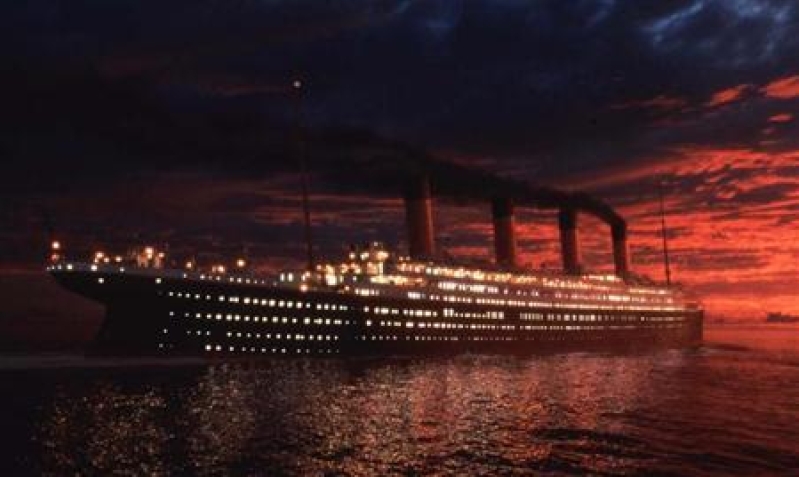
In the sensational documentary "Titanic: The New Evidence," Senan Molony shocks many long-time Titanic fans and historians with a proposal: the elegant liner sank not ultimately by an iceberg, but by a coal-fire which preceded the fateful maritime journey.
It was Titanic's maiden voyage, the cool spring of 1912, and Captain Edward Smith was earnest to retire upon his return home to England. In an ironic twist of events, the ship that even God Himself couldn't sink seemed doomed by Providence. The incident of tragedic proportions as epic as the ship itself cost the lives of over 1,500 of the 2,222 passengers, plunging them into icy blackness within a number of hours. Until now, it has been common knowledge that the Titanic sank upon hitting an iceberg in the cold, North Atlantic waters. With the discovery of detailed photographs preserved in an English attic and belonging to electrical engineer John Kempster, Molony's suspicions were confirmed in the form of a 30-foot black streak stretched across the hull's front starboard in place of a coal bunker---and undeniably near the iceberg-strike.
The Smithsonian reports: "The photographs were discovered by a descendant of a director of the Belfast-based company, Harland and Wolff, that built the Titanic. About four years ago, a collaborator of Mr. Molony’s acquired the rare photographs of the ship, meticulously taken by Harland and Wolff’s engineering chief before it left a Belfast shipyard."
The theory rests upon the suggestion that fire-damage present three weeks before leaving the English harbor weakened the hull where the iceberg struck. This assumption was considerably promoted and meticulously explained in the documentary which aired on the Smithsonian Channel in the United States this year, Jan. 21.
“It’s a perfect storm of extraordinary factors coming together: fire, ice and criminal negligence,”Molony, an Irish journalist who has studied the incident for over three decades, asserts with conviction, “The fire was known about, but it was played down. She should never have been put to sea.”
To add to the melancholy nature of the affair, Molony also claims that the impairment was known prior to the voyage-commencement---that in fact, it was known by the owners, but ignored.
The haunting popularity of the incident remains constant, with continual revival in such discoveries as the three-year old unearthing of the very violin used to play the hymn "Nearer my God to Thee" in the last hours of ship and crew, as well as the construction of a life-size replica which began in China last year. No doubt, news is continual. In truth, there still remains much room for disagreement, and time must be allowed to further test Molony's theory.







